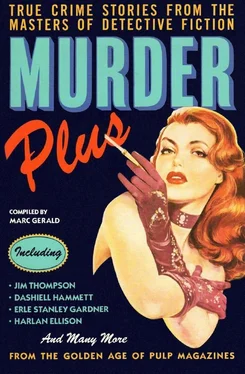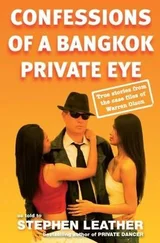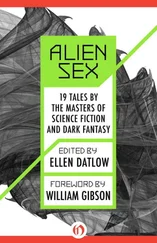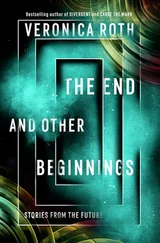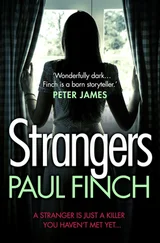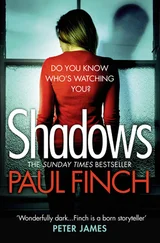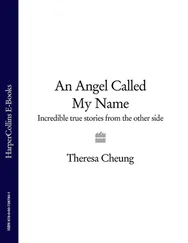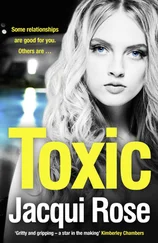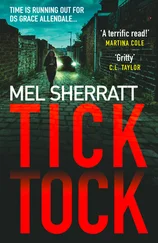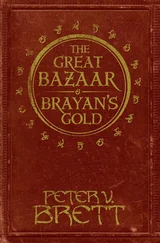Харлан Эллисон - Murder Plus - True Crime Stories From The Masters Of Detective Fiction
Здесь есть возможность читать онлайн «Харлан Эллисон - Murder Plus - True Crime Stories From The Masters Of Detective Fiction» весь текст электронной книги совершенно бесплатно (целиком полную версию без сокращений). В некоторых случаях можно слушать аудио, скачать через торрент в формате fb2 и присутствует краткое содержание. Город: New York, Год выпуска: 1992, ISBN: 1992, Издательство: Pharos Books, Жанр: Детектив, на английском языке. Описание произведения, (предисловие) а так же отзывы посетителей доступны на портале библиотеки ЛибКат.
- Название:Murder Plus: True Crime Stories From The Masters Of Detective Fiction
- Автор:
- Издательство:Pharos Books
- Жанр:
- Год:1992
- Город:New York
- ISBN:978-0-88687-662-3
- Рейтинг книги:4 / 5. Голосов: 1
-
Избранное:Добавить в избранное
- Отзывы:
-
Ваша оценка:
- 80
- 1
- 2
- 3
- 4
- 5
Murder Plus: True Crime Stories From The Masters Of Detective Fiction: краткое содержание, описание и аннотация
Предлагаем к чтению аннотацию, описание, краткое содержание или предисловие (зависит от того, что написал сам автор книги «Murder Plus: True Crime Stories From The Masters Of Detective Fiction»). Если вы не нашли необходимую информацию о книге — напишите в комментариях, мы постараемся отыскать её.
Murder Plus: True Crime Stories From The Masters Of Detective Fiction — читать онлайн бесплатно полную книгу (весь текст) целиком
Ниже представлен текст книги, разбитый по страницам. Система сохранения места последней прочитанной страницы, позволяет с удобством читать онлайн бесплатно книгу «Murder Plus: True Crime Stories From The Masters Of Detective Fiction», без необходимости каждый раз заново искать на чём Вы остановились. Поставьте закладку, и сможете в любой момент перейти на страницу, на которой закончили чтение.
Интервал:
Закладка:
It is unlikely most writers looked upon these works as art, but rather a quick way to turn back nervous creditors while waiting for a royalty check to come in. It is interesting to note that only two of the major authors in this collection, Jim Thompson and Lionel White, stayed with true crime for long. Most published sparingly, a handful of stories tops, before moving on to bigger, more lucrative markets.
It may have been just as well. The line between a first-rate and a cut-rate true crime story was fine. Editorial demands could often crush a fledgling writer’s style as well as aid it. And the relatively easy money could lead a writer to grow stale before he hit the big time, just like the boxer who leaves his best fights in the gym and fails to show up for the main event. (That’s what happened to Jack Heise. His stories from 1936 were written with uncommon energy and care. By 1940, they were strictly formula and some 52 years later, well, I’m sure you can imagine).
Whatever their intentions, one can’t deny their achievements. While the genre was rigid, and editors unforgiving, the stories I have detailed, and others that you are about to read, show writers trying valiantly — and sometimes successfully — to rise above the limits of the formula without destroying it. And in the final analysis this might be the true crime pulp’s greatest legacy. It asked for little, but its built-in drama provided a forum for writers to produce fresh and disturbing stories that live on to this day.
Today, True Detective and its sister titles survive without me. I now work for Americas Most Wanted, where I write reenactments. They like to tell me my job is to catch criminals. I prefer to think I’m helping to keep the spirit of the pulps alive in this electronic age.
And, sadly, the magazines live on without Art Crockett, too. A heart attack claimed this man of quiet dignity on June 23, 1990. He never saw Murder Plus, but I know it would have brought him much happiness.
Art always had a soft spot for redheads. Redheads like this volume’s covergirl and Rose Mandelsberg-Weiss — better known as the “Queen of the Dickbooks,” under whose keen and watchful eyes the editorship has been entrusted. And a fine job she’s doing. Thanks to her, the magazines are starting to make a wonderful comeback.
Perhaps, they will someday enjoy a second Golden Age.
I hope so.
Until then, fix yourself a stiff drink, relax, and enjoy these stories of old.
Just don’t forget to lock your doors.
Robert Bloch
Today, serial killers seem to be springing up across the American landscape as often as McDonald’s franchises — but Ed Gein, serial killer 1950s variety, was a pioneer in the field. Gein’s grim legacy had a profound influence on many writers, including Thomas Harris, author of Silence of the Lambs. Harris recently acknowledged he based many of Dr. Hannibal “the Cannibal” Lechter’s peculiar traits on Gein. But Robert Blochwas there first. An expert in the art of terror, Bloch has written hundreds of short stories since the late 1930s, and twelve of his best, including “Fat Chance,” “Frozen Fear,” and “Impractical Joker,” appear in Chamber of Horrors (Award, 1966). He’s gone on to write quite a few novels, films, and TV scripts, but his blessing and his curse are that he will forever be remembered for one book based on Gein, his 1959 classic, Psycho.
The Shambles of Ed Gein
“Searchers after horror haunt strange, far places,” wrote H. P. Lovecraft in the opening of his story, “The Picture in the House.” “For them are the catacombs of Ptolemais, and the carven mausolea of the nightmare countries. They climb to the moonlit towers of ruined Rhine castles, and falter down black cobwebbed steps beneath the scattered stones of forgotten cities in Asia. The haunted wood and the desolate mountain are their shrines, and they linger around the sinister monoliths on uninhabited islands. But the true epicure in the terrible, to whom a new thrill of unutterable ghastliness is the chief end and justification of existence, esteems most of all the ancient, lonely farmhouse of backwoods New England; for there the dark elements of strength, solitude, grotesqueness and ignorance combine to form the perfection of the hideous.”
Lovecraft’s tale then goes on to describe a visit to one of these “silent, sleepy, staring houses in the backwoods” inhabited by a weird eccentric whose speech and dress suggest origins in a bygone day. An increasingly horrible series of hints culminates in the revelation that the inhabitant of the house has preserved an unnatural existence for several centuries, sustaining life and vigor through the practice of cannibalism.
Of course it’s “only a story.”
Or — is it?
On the evening of November 16, 1957, visitors entered an ancient, lonely farmhouse — not in backwoods New England but in rural Wisconsin. Hanging in an adjacent shed was the nude, butchered body of a woman. She had been suspended by the heels and decapitated, then disemboweled like a steer. In the kitchen next to the shed, fire flickered in an old-fashioned potbellied stove. A pan set on top of it contained a human heart.
The visitors — Sheriff Art Schley and Captain Lloyd Schoephoester — were joined by other officers. There was no electricity in the darkened house and they conducted their inspection with oil lamps, lanterns, and flashlights.
The place was a shambles, in every sense of the word. The kitchen, shed, and bedroom were littered with old papers, books, magazines, tin cans, tools, utensils, musical instruments, wrapping paper cartoons, containers, and a miscellany of junk. Another bedroom and living room beyond had been nailed off; these five rooms upstairs were nailed off and deserted.
But amidst the accumulated debris of years in the three tenanted rooms, the searchers found:
two shin bones;
a pair of human lips;
four human noses;
bracelets of human skin;
four chairs, their woven cane seats replaced by strips of human skin;
a quart can, converted into a tom-tom by skin stretched over both top and bottom;
a bowl made from the inverted half of a human skull;
a purse with a handle made of skin;
four “death masks” — the well-pressed skin from the faces of women — mounted at eye level on the walls;
five more such “masks” in plastic bags, stowed in a closet;
ten female human heads, the tops of which had been sawed off above the eyebrows;
a pair of leggings, fashioned from skin from human legs;
a vest made from the skin stripped from a woman’s torso.
The bodies of 15 different women had been mutilated to provide these trophies. The number of hearts and other organs which had been cooked on the stove or stored in the refrigerator will never be known. Apocryphal tales of how the owner of the house brought gifts of “fresh liver” to certain friends and neighbors have never been publicly substantiated, nor is there any way of definitely establishing his own anthropophagism.
But H. P. Lovecraft’s “true epicure of the terrible” could find his new thrill of unutterable ghastliness in the real, revealed horrors of the Gein case.
Edward Gein, the gray-haired, soft-voiced little man who may or may not have been a cannibal and a necrophile, was — by his own admission — a ghoul, a murderer, and a transvestite. Due process of law has also adjudged him to be criminally insane.
Yet for decades he roamed free and unhindered, a well-known figure in a little community of 700 people. Now small towns everywhere are notoriously hotbeds of gossip, conjecture, and rumor, and Gein himself joked about his “collection of shrunken heads” and laughingly admitted that he’d been responsible for the disappearance of many women in the area. He was known to be a recluse and never entertained visitors; children believed his house to be “haunted.” But somehow the gossip never developed beyond the point of idle, frivolous speculation, and nobody took Ed Gein seriously. The man who robbed fresh graves, who murdered, decapitated, and eviscerated women when the moon was full, who capered about his lonely farmhouse bedecked in corpse-hair, the castor-oil-treated human skin masks made from the faces of his victims, a vest of female breast and puttees of skin stripped from women’s legs — this man was just plain old Eddie Gein, a fellow one hired to do errands and odd jobs. To his friends and neighbors he was only a handyman, and a most dependable and trustworthy babysitter.
Читать дальшеИнтервал:
Закладка:
Похожие книги на «Murder Plus: True Crime Stories From The Masters Of Detective Fiction»
Представляем Вашему вниманию похожие книги на «Murder Plus: True Crime Stories From The Masters Of Detective Fiction» списком для выбора. Мы отобрали схожую по названию и смыслу литературу в надежде предоставить читателям больше вариантов отыскать новые, интересные, ещё непрочитанные произведения.
Обсуждение, отзывы о книге «Murder Plus: True Crime Stories From The Masters Of Detective Fiction» и просто собственные мнения читателей. Оставьте ваши комментарии, напишите, что Вы думаете о произведении, его смысле или главных героях. Укажите что конкретно понравилось, а что нет, и почему Вы так считаете.
